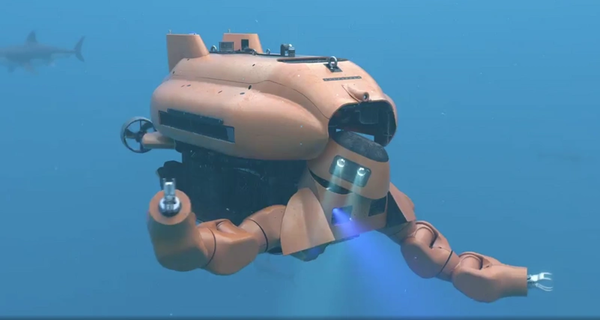
Norwegian subsea drone specialist Stinger Technology has entered into a collaboration agreement with the U.S. ocean robotics firm Houston Mechatronics.
Houston Mechatronics is currently developing what has been described as one of the subsea industry's most interesting robots - the Aquanaut - and Stinger wants to bring it to Norway to serve the offshore oil and gas market.
The Aquanaut is a subsea robotic solution that can serve both as a remotely operated vehicle (ROV) and as an autonomous underwater vehicle (AUV). Based on the requirements, the subsea robot transforms from AUV mode into an ROV.
In this case, the Aquanaut maker explains on its website, the hull separates in one fluid motion, exposing two additional control thrusters, the vehicle arms, and adding another degree of freedom to the vehicle head mechanism.
"Sometimes you need an ROV, other times you may need an AUV. We designed Aquanaut to be the best of both platforms. The vehicle can manipulate subsea and has all the remote capability of an AUV," Houston Mechatronic's says on its website.
See the transformation in action below:
Under the agreement with Stinger, Houston Mechatronics will provide the Aquanaut and the necessary services needed to target and execute
inspection, repair, and maintenance operations within the Norwegian Oil & Gas market and Stinger will add Aquanaut capabilities to its existing IRM services business.
According to Stinger, in 2021 Aquanaut will be in Norway finalizing product qualifications in order to be ready for commercial applications in 2022.
In an interview with Offshore Engineer's Elain Maslin a year ago, Houston Mechatronics said that the trial Aquanaut was rated to 300 meters water depth but the first full commercial system would be designed for up to 3,000 meters water depth and could include inductive charging, so it could be a resident system.
Per the article last year, working in ROV mode, Aquanaut's power capacity is expected to last a day (using all imaging systems, arms, and its seven thrusters). In AUV mode the vehicle uses less power, so a more realistic scenario is a mix of both modes, extending mission duration by at least 50%.
Per Houston Mechatronics' Aquanaut spec sheet, when in AUV mode, Aquanaut can cover up to 200 km in one mission while accomplishing typical AUV tasks like seabed mapping, and wide-area structure inspection.



